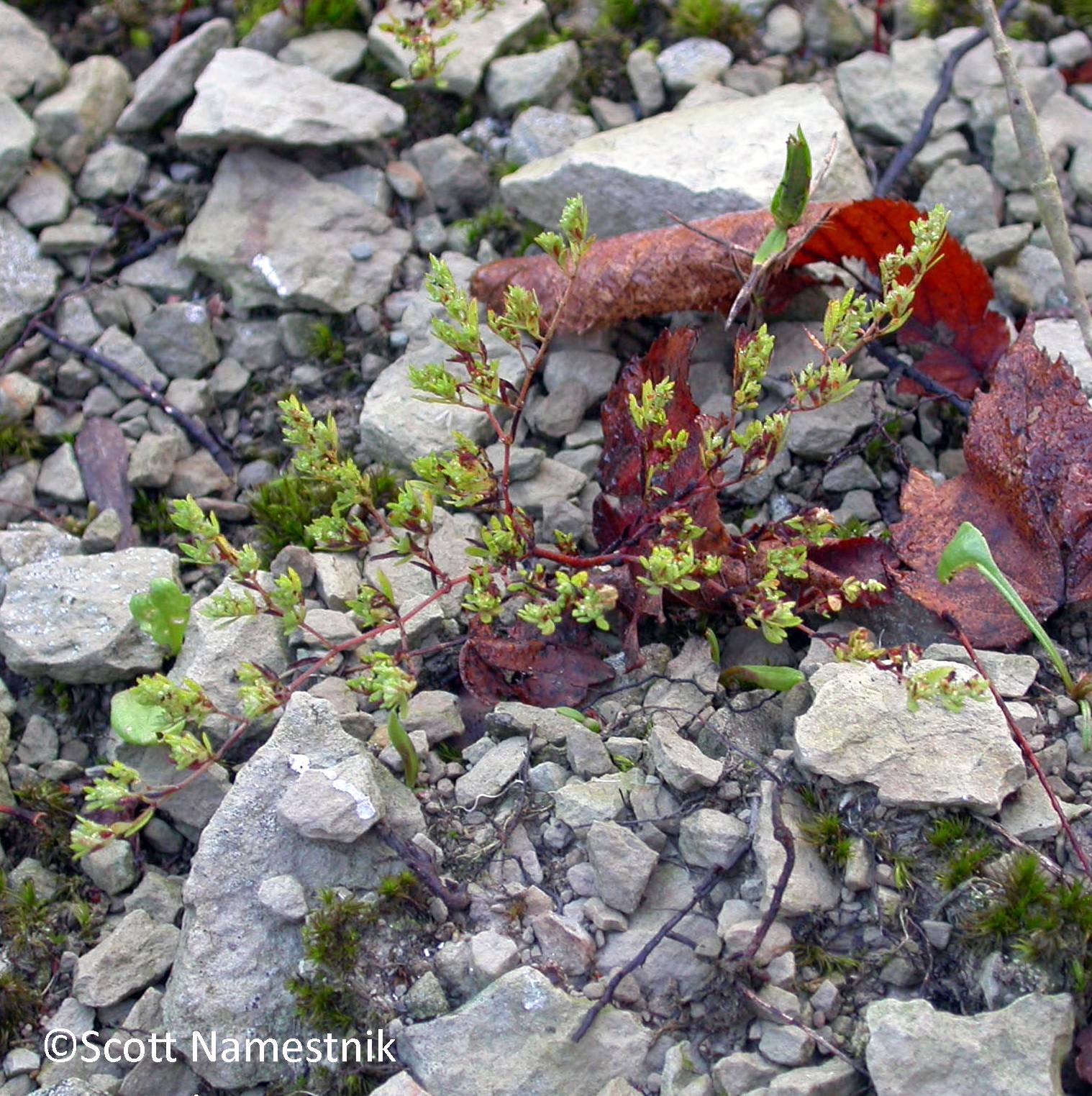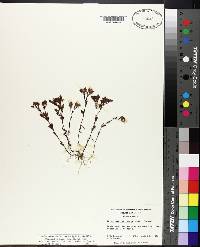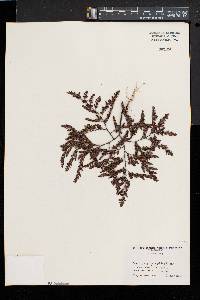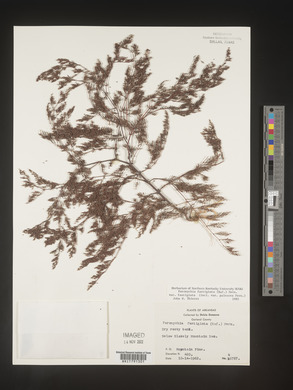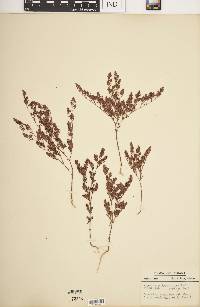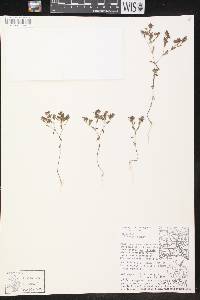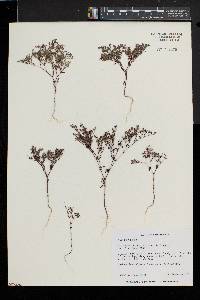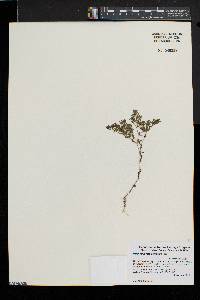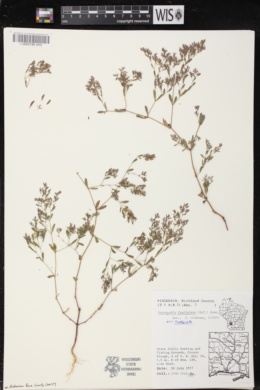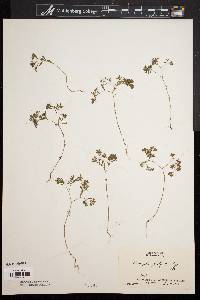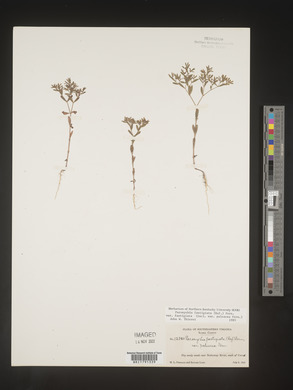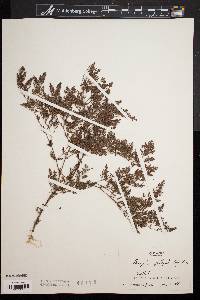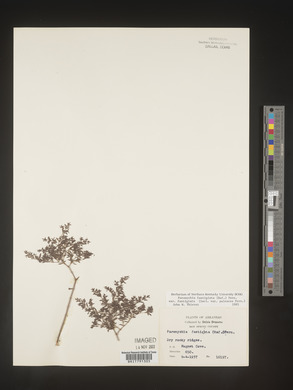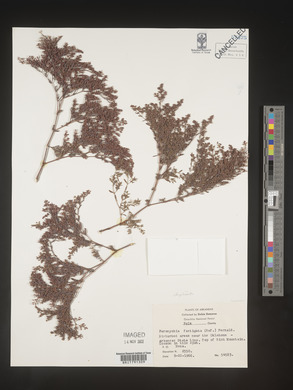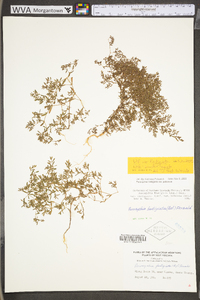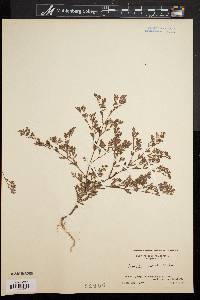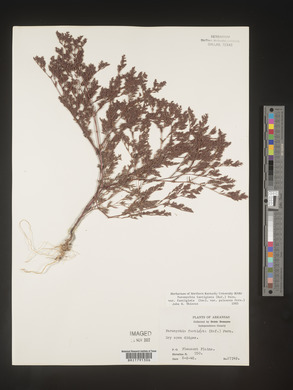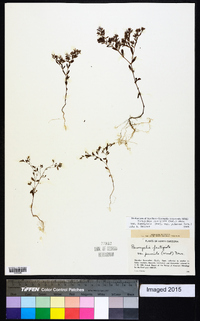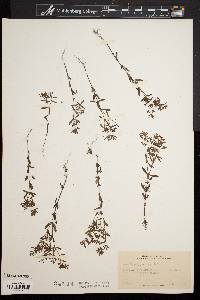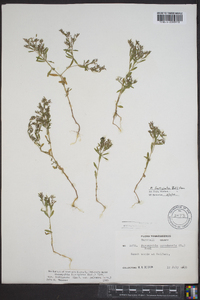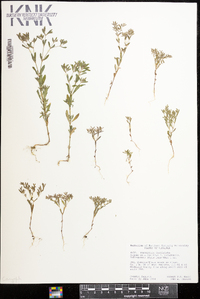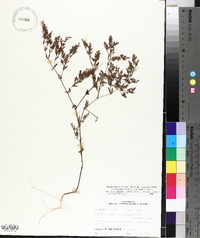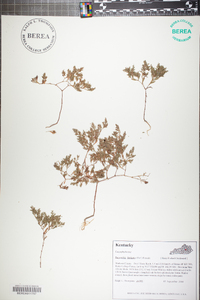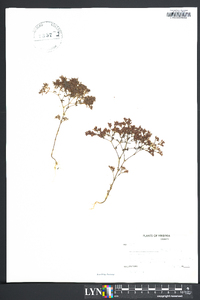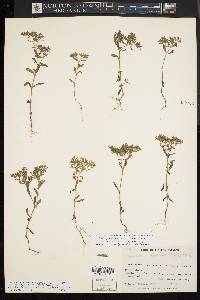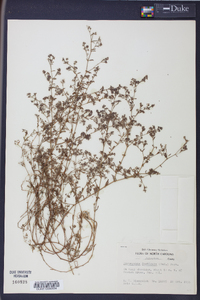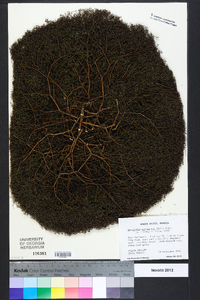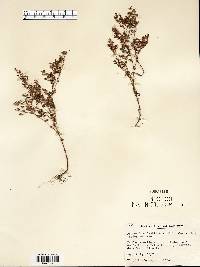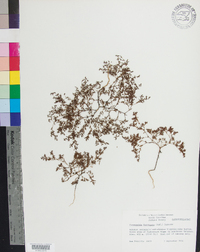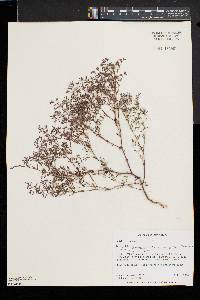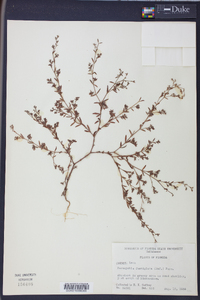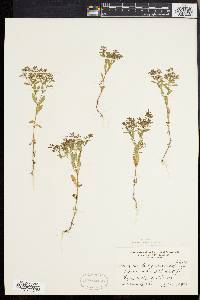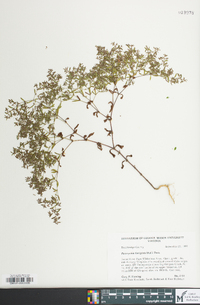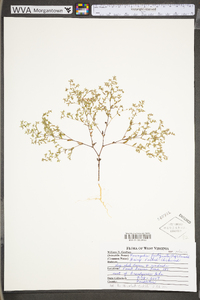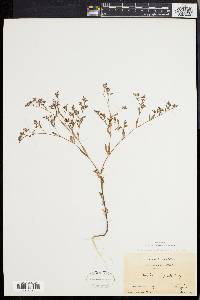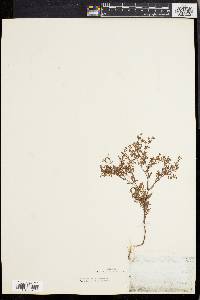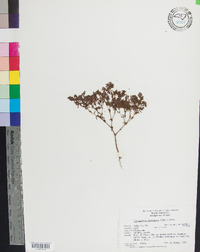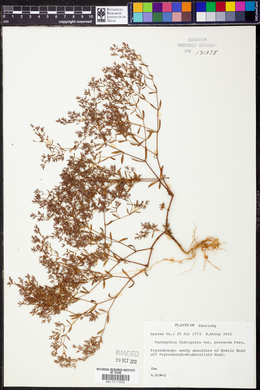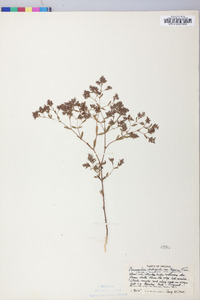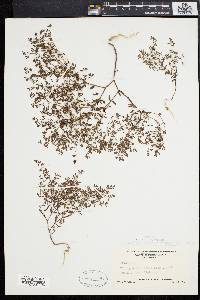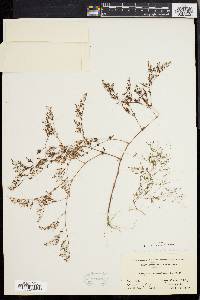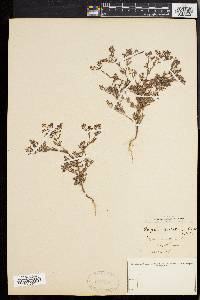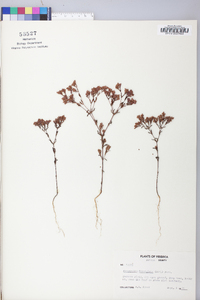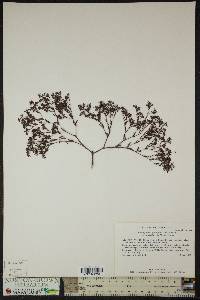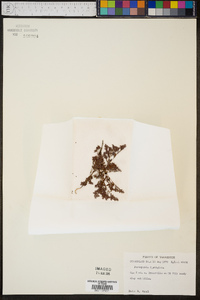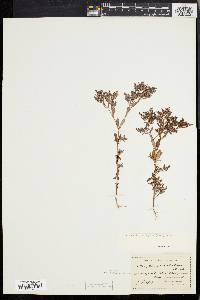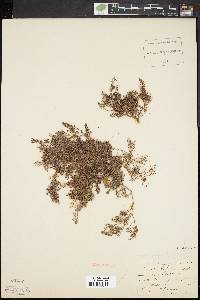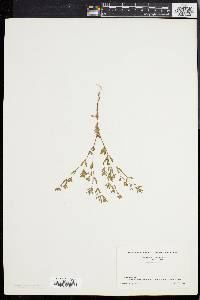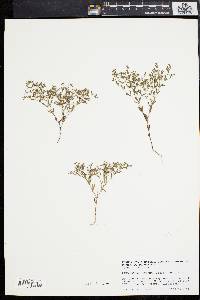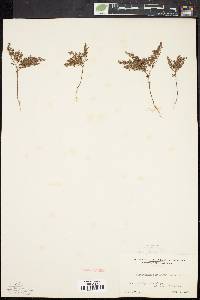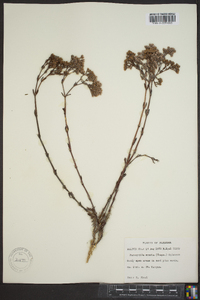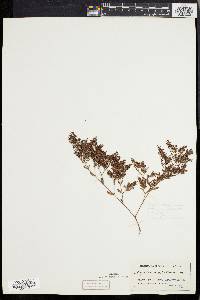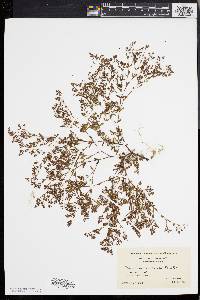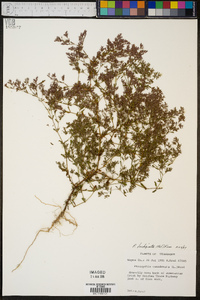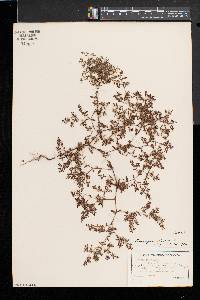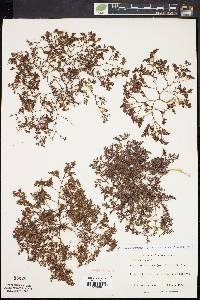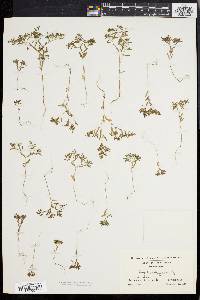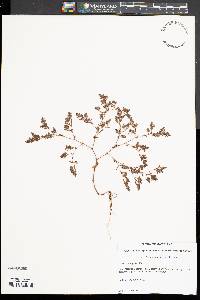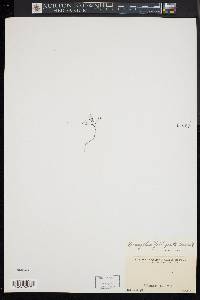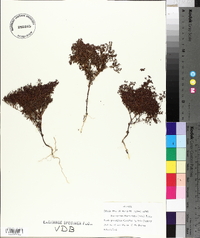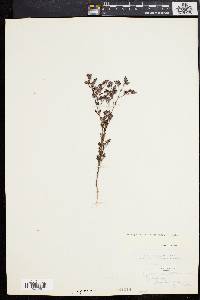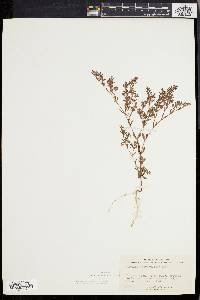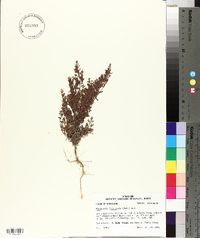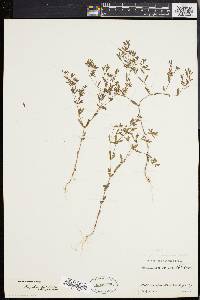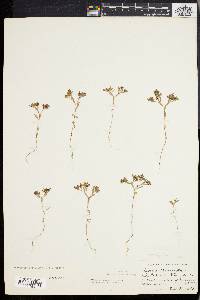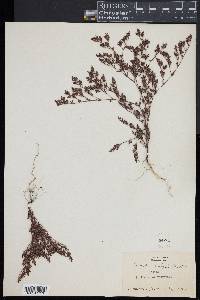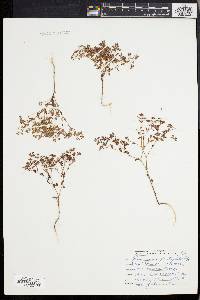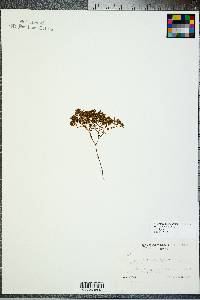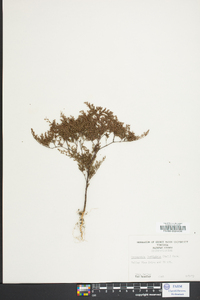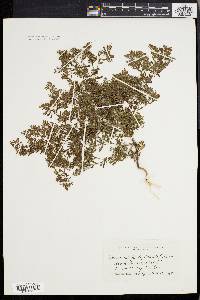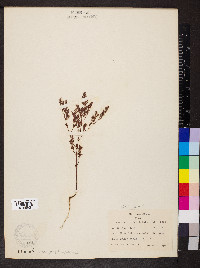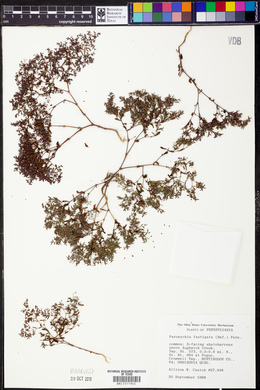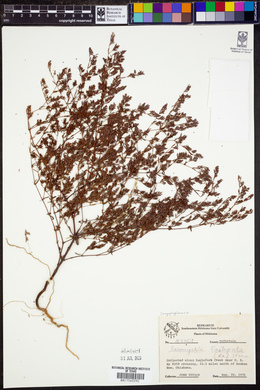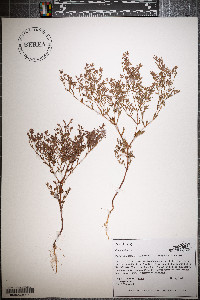Paronychia fastigiata
|
|
|
|
Family: Caryophyllaceae
Hairy Forked Nailwort
[Anychia polygonoides Raf.] |
Plants annual; taproot filiform to slender. Stems erect, usually much-branched, 4-30 cm, retrorsely to spreading-pubescent mostly on 1 side. Leaves: stipules subulate to lanceolate, 0.5-4.5 mm, apex acuminate, sometimes fimbriate; blade usually dotted or blotched, oblanceolate to elliptic or obovate, 2-25 × 0.5-7(-10) mm, herbaceous to leathery, apex subobtuse to acute or cuspidate, glabrous or occasionally with very few scattered trichomes along midrib. Cymes terminal, 25-70+-flowered, branched, loose to compact, forming clusters 3-10 mm wide. Flowers 5-merous, short-cylindric, with enlarged hypanthium and calyx ± cylindric, 1.1-1.6 mm, glabrous or with few scattered hairs; sepals greenish to brownish, veins absent, linear-oblong, 1-1.2 mm, leathery to rigid, margins white to translucent, 0.05-0.1 mm wide, scarious, apex terminated by mucro, hood narrowly rounded, mucro short-conic, 0.05-0.3 mm, ± minutely scabrous; staminodes absent; styles 2, 0.07-0.6(-0.7) mm. Utricles obovoid to obconic, 0.7-1 mm, minutely papillate. 2n = 32, 36. The varieties here recognized are sympatric over at least portions of their ranges. A detailed study on infraspecific variation within Paronychia fastigiata is warranted.
Annual herb with a thread-like to slender taproot 5 - 30 cm tall Stem: upright, forking, much-branched, minutely hairy (mostly on one side). Leaves: opposite, 0.5 - 2.5 cm long, 0.5 - 7 mm wide, reverse lance-shaped to elliptic with a blunt to pointed tip, one-veined, often dotted or blotched, sometimes leathery, sometimes having hair-like growths along the midrib, with conspicuous stipules. Stipules two per node, 0.5 - 4.5 mm long, awl-shaped to lance-shaped with a long-pointed tip, papery. Inflorescence: a terminal, forked, loose to compact cluster (cyme) of 25 to 70 flowers, 3 - 10 mm wide. Flowers: without petals, tiny, hypanthium (a floral tube formed by the sepals and stamens) cup-shaped, sometimes with a few scattered hairs, subtended by stipular bracts. Stamens usually five. Styles two, short. Sepals: five, ascending or slightly descending, fused at the base, greenish to brownish with white to translucent margins, lance-shaped to linear with a point at the tip, without veins, leathery to rigid, scarious-margined (dry, thin, and membranous), with a prominent, narrowly rounded hood at the end. Calyx (the sepals, collectively) 2 - 3 mm long. Fruit: bladder-like, one-seeded (utricle), indehiscent, about 1 mm long, reverse egg-shaped to reverse conical, membranous, on an upright stalk. Seed brown, laterally compressed. Similar species: The similar Paronychia canadensis differs by having hairless stems and shorter calyxes (1 - 1.5 mm). Flowering: June to October Habitat and ecology: Woods, grassland, and in the shade of picnic areas. Occurence in the Chicago region: native Etymology: Paronychia comes from the Greek words para, meaning near, and onyx, meaning nail, referring to the flame colored flowers. Fastigiata means "having close together, erect branches, which often form a column." Author: The Morton Arboretum Annual with forked, erect or diffusely spreading, puberulent stems 5-25 cm; lvs of the primary branches narrowly lance-elliptic to oblanceolate, 5-20 mm, acute to obtuse, frequently white-punctate; foliar bracts extending through the repeatedly forking cymes; cal 2-3 mm, glabrous or scantily puberulent; sep lance-linear, 1-3-nerved, very often corrugated, the tip of the hooded apex abruptly apiculate or short-awned; styles united below; fr glabrous, included or barely exserted. Dry woods or openings; Mass. to Wis. and e. Minn., s. to Fla. and Tex. July-Sept. Var. fastigiata, with the range of the sp., is erect to low and diffuse, usually reddish or brownish at maturity, the lvs 1-2 cm, usually serrulate, the stipular bracts lanceolate, equaling or shorter than the cal, the style much shorter than the ovary. Var. paleacea Fernald, occurring more or less throughout the range of the sp., differs in its usually greenish color and in its lance-attenuate stipular bracts equaling or mostly surpassing the cal. Var. nuttallii (Small) Fernald, apparently local in se. Pa., differs from var. fastigiata in having sep with a stout white awn 0.2 mm. Var. pumila (A. W. Wood) Fernald, occurring from Pa. and O. to Ga. and Ala., mainly on shale-barrens, is low, diffusely and usually horizontally branched, the lvs 7-12 mm and entire, the stipules lance-ovate, ciliolate, the style as long as the ovary. (Anychiastrum montanum) Gleason, Henry A. & Cronquist, Arthur J. 1991. Manual of vascular plants of northeastern United States and adjacent Canada. lxxv + 910 pp. ©The New York Botanical Garden. All rights reserved. Used by permission. |

